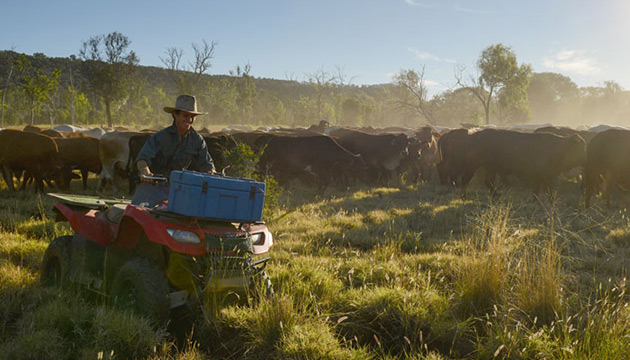The restoration of vast areas of Australia isn’t being done by urban greenies, but by a growing number of Australian farmers who are embracing regenerative practices to get back in step with nature.
Story By Amanda Burdon
“I don’t believe I am a greenie. I just feel the environment has to be looked after while we make a living,” says respected northern cattleman Garry Riggs. “We are trying to do the best we can. It’s a piece of dirt, but it has to last a long, long time.”
Decades in the industry have taught Garry and wife Michelle a thing or two about land and livestock management. They’ve worked in western Queensland, Western Australia and more recently the Northern Territory, where Garry collaborated with researchers to manage Mataranka Station (part of the Katherine Rural College of Charles Darwin University) and became a founding member of Roper River Landcare. “That all got me thinking about how we could do better with what we have – how to improve genetics and fertility and cattle management to support the environment,” Garry says.
Taking up undeveloped 596-square-kilometre Lakefield Station, 470 kilometres south of Darwin, represented an ideal opportunity to put some ideas into action. “It was a fresh sheet of canvas, with no boundary fences,” Garry says. However, the landscape had been devastated by wildfires and degraded by hundreds of wild cattle and feral animals. But what Lakefield did have was one of the largest permanent lakes on the Sturt Plateau – a refuge for rare bird species – and a series of wetlands and swamps that were grossly under-represented in the national reserve system. The Riggs’ secured grants to fence off wetlands and divert waters, to better manage cattle impacts and support wildlife. Some 1200ha is protected under Territory Conservation Agreements.
They prepared a property management plan, fenced 28 paddocks, installed laneways and increased water sources, started rotational grazing and a burning program. They now advocate early weaning and controlled mating. Strict culling of non-fertile cows has lowered their breeding herd from 2800 to 2200 – resulting in reduced carbon emissions and environmental impact – but better weaning outcomes.
“It’s bloody hard work when there’s mostly only two of you,” Garry says. “But we have to do our bit to keep the wetlands on our part of the Sturt Plateau pristine and keep striving to improve our systems – for better animal production and welfare, environmental and monetary outcomes.”
This Story is from Issue #101
Outback Magazine: June/July 2015










